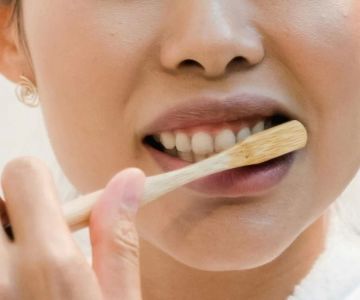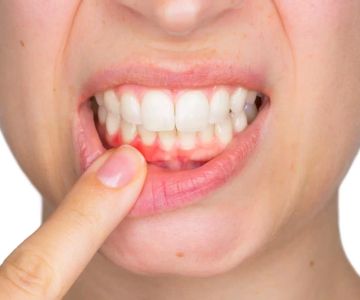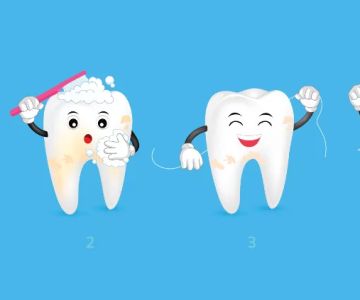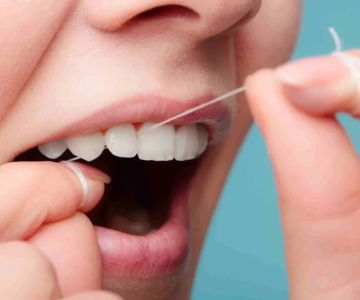Healthy Habits for Reducing Tooth Staining
- 1. Understanding Tooth Staining Causes
- 2. Healthy Diet for Teeth Protection
- 3. Oral Hygiene Tips to Prevent Staining
- 4. Lifestyle Habits to Maintain Whiter Teeth
- 5. Choosing the Right Oral Care Products
1. Understanding Tooth Staining Causes
Tooth staining can occur for various reasons, from poor oral hygiene to consuming staining foods and drinks. Certain foods like coffee, red wine, and berries are notorious for staining your teeth. In addition, smoking or using tobacco products can lead to stubborn yellow stains. Even aging can cause enamel to wear down, exposing the yellowish dentin beneath. Understanding these causes is the first step to combating tooth staining effectively.
2. Healthy Diet for Teeth Protection
Your diet plays a critical role in maintaining the natural whiteness of your teeth. Eating crunchy fruits and vegetables, like apples and carrots, can help scrub away surface stains as you chew. Additionally, dairy products, such as cheese and yogurt, are rich in calcium and phosphate, which help remineralize tooth enamel, making it more resistant to staining. Drinking plenty of water throughout the day helps rinse away food particles and acids that could lead to discoloration.
Avoid sugary snacks that can contribute to plaque buildup, which in turn can lead to staining and cavities.
3. Oral Hygiene Tips to Prevent Staining
Good oral hygiene is essential to preventing tooth staining. Brushing at least twice a day with a fluoride toothpaste helps remove plaque and surface stains before they have a chance to set in. It's also crucial to floss regularly to remove food particles that get trapped between teeth, where brushing alone can’t reach. Don’t forget to use a mouthwash that helps fight bacteria and freshen breath, as this can also help in reducing plaque formation.
Consider using a whitening toothpaste that contains gentle abrasives designed to polish the enamel and remove surface stains over time.
4. Lifestyle Habits to Maintain Whiter Teeth
Incorporating some simple lifestyle habits can make a significant difference in the color of your teeth. For example, if you’re a coffee or wine drinker, try using a straw to minimize contact with your teeth. After consuming staining foods or drinks, rinse your mouth with water or brush your teeth to prevent stains from setting. Additionally, regular dental checkups and professional cleanings will help remove stubborn stains that are difficult to tackle with home care alone.
Quit smoking or using tobacco products to prevent dark stains that can be extremely difficult to remove.
5. Choosing the Right Oral Care Products
There are various oral care products designed to reduce or prevent tooth staining. Look for toothpaste that contains activated charcoal, baking soda, or hydrogen peroxide, all of which have been shown to help with stain removal. Additionally, consider incorporating whitening strips into your routine for more noticeable results. However, it’s essential to be cautious and not overuse whitening products, as they can sometimes cause tooth sensitivity or enamel erosion when used excessively.
For those with more severe staining, you may want to consult a dentist about professional whitening treatments or veneers to restore your smile to its natural brightness.







 Westgate Dental Arts3.0 (2 review)
Westgate Dental Arts3.0 (2 review) Coventry Family Dental4.0 (247 review)
Coventry Family Dental4.0 (247 review) Familia Dental3.0 (1028 review)
Familia Dental3.0 (1028 review) Dr. Daniel S. Fife, DDS4.0 (31 review)
Dr. Daniel S. Fife, DDS4.0 (31 review) Dentistry At Suburban Square: Michael I. Wollock, DMD4.0 (1228 review)
Dentistry At Suburban Square: Michael I. Wollock, DMD4.0 (1228 review) Comfort Care Dental4.0 (1156 review)
Comfort Care Dental4.0 (1156 review) The Importance of Oral Health Education During Pregnancy for a Healthy Pregnancy
The Importance of Oral Health Education During Pregnancy for a Healthy Pregnancy Why Skipping Dental Checkups Can Lead to Bigger Oral Health Problems
Why Skipping Dental Checkups Can Lead to Bigger Oral Health Problems Best Tips for Brushing Your Teeth Properly for Healthy Gums: Essential Techniques for Oral Health
Best Tips for Brushing Your Teeth Properly for Healthy Gums: Essential Techniques for Oral Health Advantages of Porcelain Dental Restorations
Advantages of Porcelain Dental Restorations How Can Diabetes Cause Tooth and Gum Problems? Preventing and Managing Oral Health Issues
How Can Diabetes Cause Tooth and Gum Problems? Preventing and Managing Oral Health Issues Healthy Habits for Promoting Good Oral Health and Hygiene: Tips for a Healthy Smile
Healthy Habits for Promoting Good Oral Health and Hygiene: Tips for a Healthy Smile